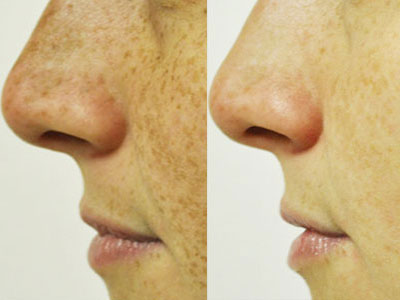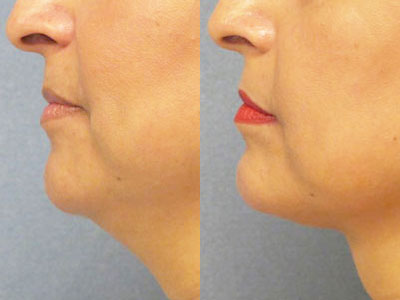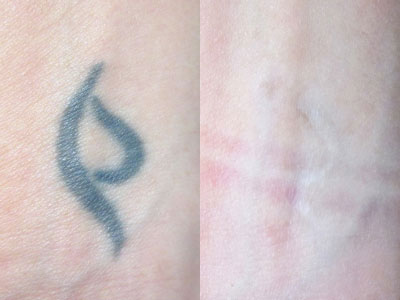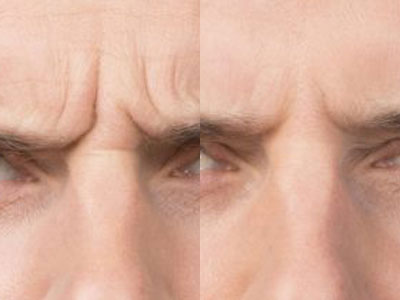VI Peel
Offered at our convenient location in Portland, Oregon
A VI Peel is a skin rejuvenation treatment intended to improve wrinkles, acne scars, pigment problems, age spots, and other signs of aging. This exfoliating, nutrient-laden treatment contains ingredients that stimulate collagen production to replenish and restore the skin to a more youthful appearance. The VI peel is one of the most talked-about facial rejuvenation procedures because of its exceptional results and minimal recovery time. This treatment goes beyond the abilities of an ordinary peel, and dramatically improves your skin regardless of the skin type. To learn how you can activate new supple skin with a VI Peel treatment, schedule a free consultation with one of our providers. You can reach our offices with a convenient online form, or get in touch with us by calling (503) 505-5288.
Contents
About VI Peel
Many of the chemicals in those early dermatological breakthroughs are still important active ingredients in today’s skin treatments. They remove outer layers of damaged skin, and encourage the production of new, healthy skin cells. Continual improvements in skincare have paved the way for VI Peel. This medium depth peel treatment offers dramatic before-and-after differences for a wider array of skin types than ever before. The VI Peel clears away dead and damaged skin cells and impurities and facilitates collagen production. Skin appears younger and smoother. Its rich pharmaceutical-grade active ingredients harmonize to combat signs of aging, remove sun damage, and improve the skin’s texture. A VI Peel contains a unique mixture of five different acids with rejuvenating abilities. VI uses:
Trichloroacetic Acid (TCA)
This scar-repairing chemical penetrates into the deepest layers of the skin to stimulate collagen and eliminate dead cells. As a result, new healthy skin develops, replacing irregular pigmentation, scarring, and wrinkles. [1][2]
Phenol
Works similar to TCA to perforate through the outer layers of skin to get rid of damaged skin, wrinkles, and creases. [2]
Retin-A
Retin-A is a form of vitamin A. The helpful ingredient works to stimulate skin cell turnover. This opens pores and releases trapped impurities. RetinA also helps regulate oil production and clear up acne.
Salicylic Acid
Salicylic acid is commonly found in acne treatments and is used to exfoliate the skin and cleanse the pores thoroughly. Acne breakouts can be successfully prevented and managed with this beneficial chemical.
Vitamin C
This powerful vitamin is an antioxidant and brightening agent. It works to fight damage from sun and pollution, reduce hyperpigmentation, and improve the skin’s overall quality.
VI Treatment Areas
VI Peels are commonly used to treat the face. However, it can also be used on other areas of the body, including:
- Neck
- Upper chest
- Arms
- Hands
- Back
Benefits
Imagine yourself with fresh, supple skin. A VI Peel can be an invaluable ally in achieving a radiant, smooth complexion.
A VI Peel delivers:
- Vastly improved skin texture
- Reduced fines lines, wrinkles, hyperpigmentation, and freckles
- Ramped up collagen production for firmer, youthful skin
- Results in one week
- Less discomfort and downtime than other chemical peels
Candidates
A VI Peel treatment is an easy, non-invasive way to address mild skin imperfections. Candidates are recommended to be in good health and have reasonable expectations of what the treatment can achieve. Patients with certain skin conditions may benefit from another treatment. While the treatment is safe for all skin types, some patients may be at greater risk for hyperpigmentation. Patients who have taken medications such as Accutane within the last year or are sensitive to anti-inflammatory medicines may not be eligible for the peel. The experts at Bridgetown Aesthetics will be happy to discuss the specifics with prospective candidates at a personal consultation.
Preparation
The VI Peel treatment is a streamlined process from start to finish. Our office may ask you to complete the following before your session:
- Stop using certain medications or skin treatments
- Other products may be recommended to prepare your skin for the treatment.
- Limit direct sun exposure.
- Do not wax, shave, or apply creams to the face on the day of your treatment.
Procedure
We’ll begin your treatment by thoroughly cleansing your skin of dirt and oils. Next, the first layer of the VI Peel solution is applied thoroughly to the skin. [3] At first, you may feel a slight tingling sensation. After the second layer is applied, your skin may temporarily turn frosted-white. You’ll leave the office with the solution still on. From start to finish, your appointment should only take 30 minutes to complete.
Recovery
After your treatment, you may experience mild redness and swelling in the face. Since you won’t be able to apply makeup or other cosmetics for the next week, you may choose to stay out of the spotlight! Any residual burning sensation can be soothed with a neutral moisturizer. We recommend staying out of direct sunlight during this time. After a few days, your skin will begin to peel, and you’ll shed the outer layer of weathered skin. You may have the urge to peel or flake away the dead skin, but it’s crucial not to interfere with this process. Picking can lead to scarring and infections. [3] The peeling phase lasts about a week, after which you’ll have a layer of fresh, sensitive skin. It may be more reddish than normal, but this will fade. Be sure to use a sunscreen of at least SPF 30.
Results
Full results can be seen in 4-6 weeks after the treatment. VI Peel recommends a series of 3-4 peels for best results. Wrinkles and pigmentation irregularities will be diminished, acne improved, and dull skin replaced with a dewy, radiant glow.
References
- An overview of chemical peels. (n.d.). The PMFA Journal. Retrieved October 26, 2021, from https://www.thepmfajournal.com/features/post/an-overview-of-chemical-peels
- Gozali, M. V., & Zhou, B. (2015). Effective Treatments of Atrophic Acne Scars. The Journal of Clinical and Aesthetic Dermatology, 8(5), 33–40. https://www.ncbi.nlm.nih.gov/pmc/articles/PMC4445894/
- Samargandy, S., & Raggio, B. S. (2020). Skin Resurfacing Chemical Peels. PubMed; StatPearls Publishing. https://www.ncbi.nlm.nih.gov/books/NBK547752/






